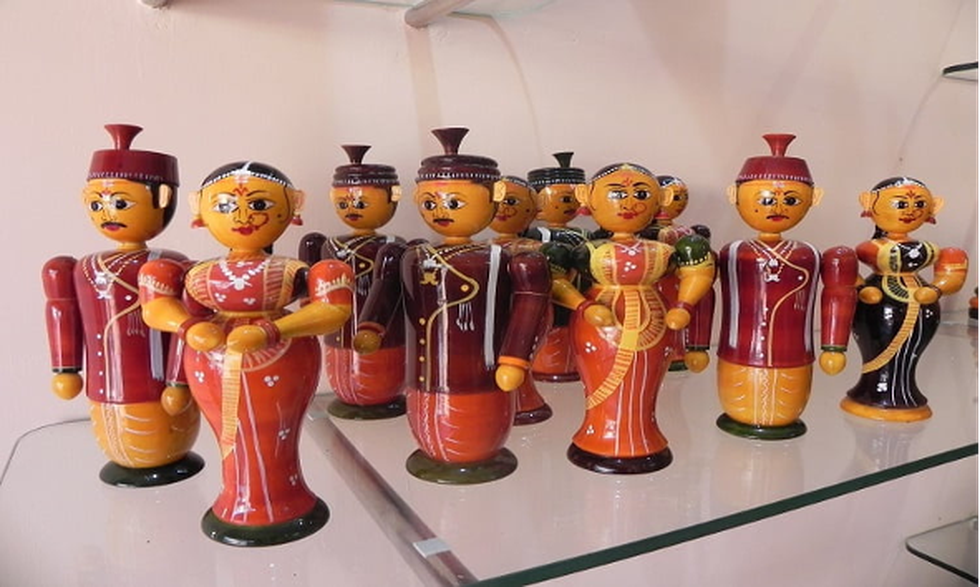About Etikoppaka toys:
- These are traditional toys made by artisans of Etikoppaka village located on the banks of Varaha River in Visakhapatnam district of Andhra Pradesh.
- These toys are made out of wood and are coloured with natural dyes derived from seeds, lacquer, bark, roots and leaves.
- The artisans mainly use the wood from trees known as 'ankudu' (Wrightia Tinctoria) that is soft in nature.
- These toys have no sharp edges. They are rounded on all sides.
- Etikoppaka toys received Geographical Indication (GI) tag IN 2017.
- Why are they called lacquer toys?
- While making the Etikoppaka toys, lac, a colourless resinous secretion of numerous insects, is used.
- The already prepared vegetable dyes are further mixed to the lac, during the process of oxidation.
- After this process, the end product obtained is rich and colored lacquer.
- The lac dye is used for decorating the Etikoppaka toys, which are exported all over the world.
- Thus, the toys are also called lacquer toys because of the application of lacquer coating.
What is the Geographical Indication (GI) tag?
- A geographical indication (GI) is a sign used on products that have a specific geographical origin and possess qualities or a reputation that are due to that origin.
- In order to function as a GI, a sign must identify a product as originating in a given place.
- Geographical Indications are covered as a component of intellectual property rights (IPRs) under the Paris Convention for the Protection of Industrial Property.
- At the International level, GI is governed by the World Trade Organisation’s (WTO’s) Agreement on Trade-Related Aspects of Intellectual Property Rights (TRIPS).
- In India, Geographical Indications registration is administered by the Geographical Indications of Goods (Registration and Protection) Act, 1999.
- The first product in India to be accorded with GI tag was Darjeeling tea in the year 2004-05.
